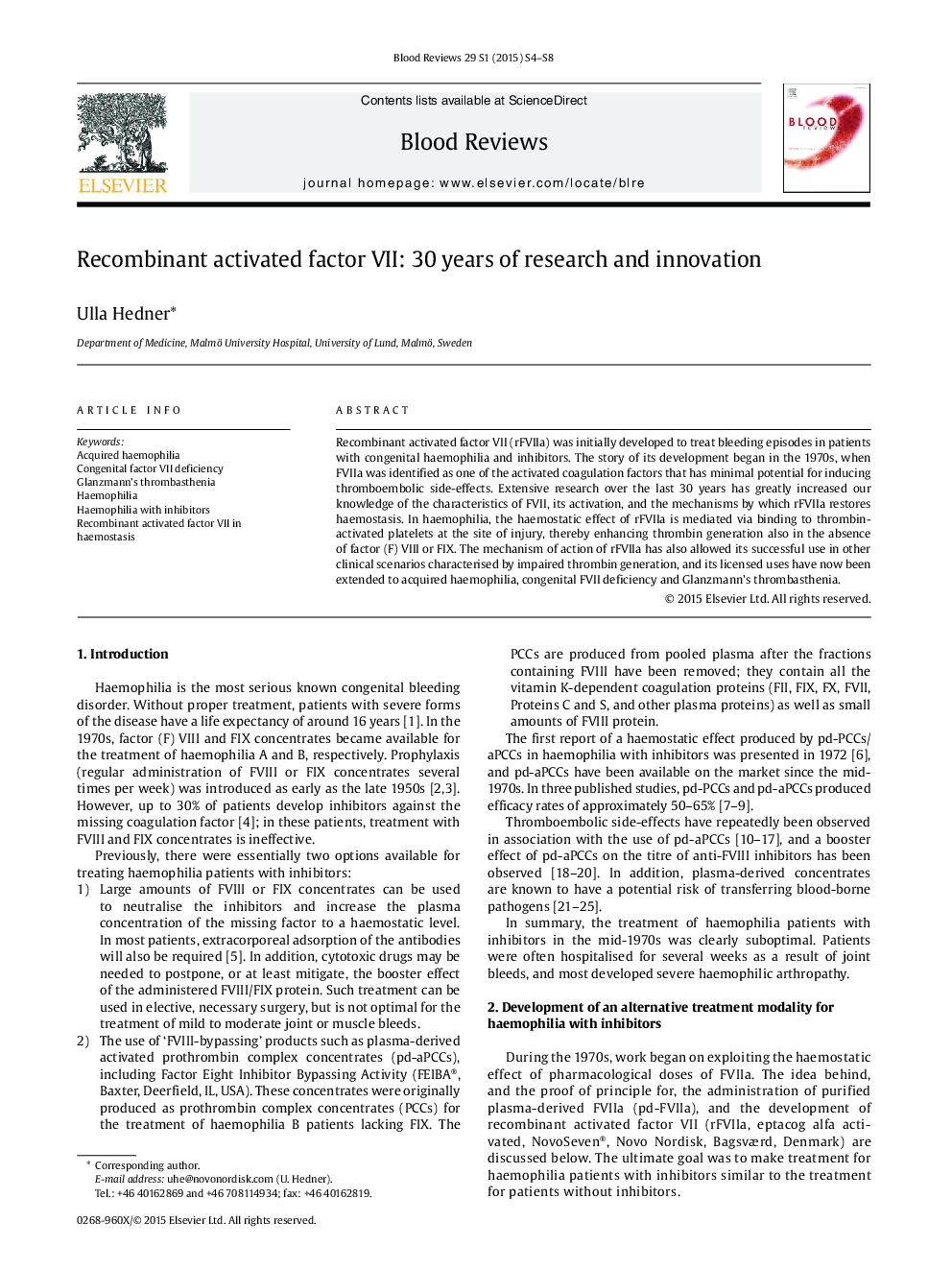| Article ID | Journal | Published Year | Pages | File Type |
|---|---|---|---|---|
| 2106157 | Blood Reviews | 2015 | 5 Pages |
Recombinant activated factor VII (rFVIIa) was initially developed to treat bleeding episodes in patients with congenital haemophilia and inhibitors. The story of its development began in the 1970s, when FVIIa was identified as one of the activated coagulation factors that has minimal potential for inducing thromboembolic side-effects. Extensive research over the last 30 years has greatly increased our knowledge of the characteristics of FVII, its activation, and the mechanisms by which rFVIIa restores haemostasis. In haemophilia, the haemostatic effect of rFVIIa is mediated via binding to thrombin-activated platelets at the site of injury, thereby enhancing thrombin generation also in the absence of factor (F) VIII or FIX. The mechanism of action of rFVIIa has also allowed its successful use in other clinical scenarios characterised by impaired thrombin generation, and its licensed uses have now been extended to acquired haemophilia, congenital FVII deficiency and Glanzmann's thrombasthenia.
